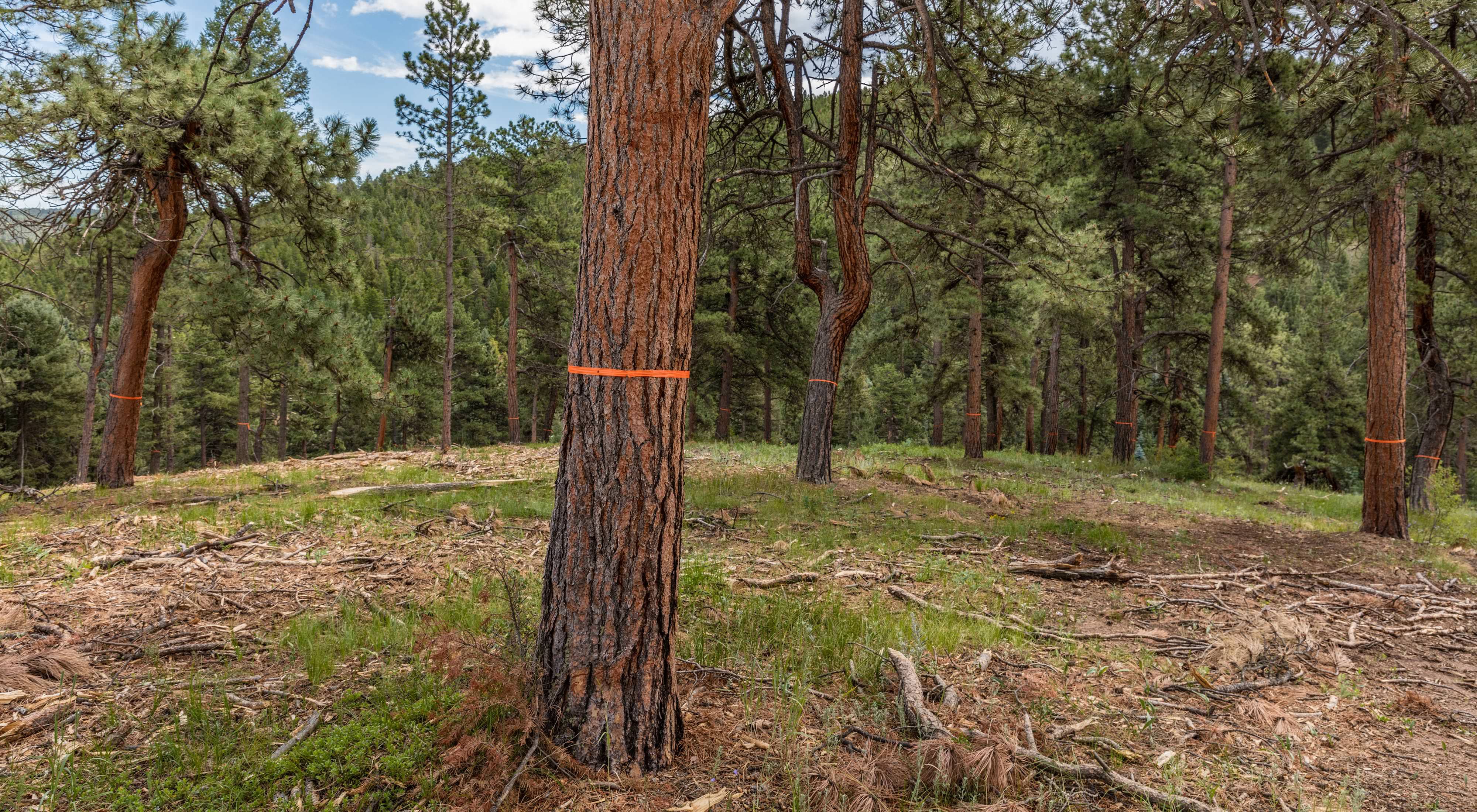Restoring Colorado's Front Range Forests
Tree thinning will reduce risk of wildfire and help prepare forests for climate change
Just 150 years ago, the ponderosa pine forests of the Front Range were more open, characterized by dispersed clusters of trees interspersed with grassy meadows.Since that time, a long-standing policy of fire suppression has allowed these open spaces to fill in with trees, becoming a denser and more continuous forest.
More trees are good, right? Not necessarily. In fact, in some forest systems, denser forests are more prone to severe wildfires, insect infestations and other problems.
Front Range Forest Report
A new report authored by scientists at The Nature Conservancy and other organizations lays out guidelines for restoring ponderosa pine and mixed conifer forests to a healthier condition, closer to their historic structure and more resilient in the face of wildfire and a changing climate. The report takes into consideration the unique characteristics and climate of the Front Range. Thinning the forests and building back heterogeneity into the landscape—a mix of different ages, sizes and spacing of trees— will help them withstand not just wildfire, drought and insects but climate change.
Rob Addington, landscape ecologist at the Conservancy, is the lead author of the report. To inform their recommendations, the team looked to forest reconstruction research—a field that uses clues like fallen timber and stumps from trees that were cut over a century ago to determine how the forest used to look and fire scars to reconstruct the natural fire interval.
“What we saw from the research was the importance of spatial patterns— clumps of trees, openings, more of a heterogeneous landscape,” Addington explains.
Recommendations
To return the forest to this condition, the tree density and overall fuel loads must be reduced. Fire is a natural element in the landscape that maintains the forest structure and stimulates the germination of some species. However, fire suppression has allowed fuels to build up, causing the fires that do occur to be much more intense than usual. Rather than burning at low to moderate intensity, these fires burn hot enough to kill mature trees over large areas. Proactively thinning the forests and clearing out underbrush, through mechanical removal and controlled burns, will reduce the risk of severe fires.
“We do it in the spirit of ensuring that wildfires don't burn so severely that we lose the ability for forests to recover.” Addington explains. “We’re removing trees now at a moderate level in hopes of maintaining trees for the longer-term, to sustain all the values and benefits that forests provide, such as wildlife habitat, clean water, and recreational opportunities.”
The fuel-reduction efforts are aimed at enabling forests to function in a healthy natural way that is resilient in the face of change. For example, at higher elevations forests tend to be cooler and wetter, whereas in the lowlands forests are adapted to warmer, drier conditions. To create resiliency, land managers should promote the kind of forest that is adapted to a warmer environment where ecologically appropriate.
Next Steps
The report was released by the USDA Forest Service’s Rocky Mountain Research Station. It was produced and reviewed by scientists at the Forest Service, the Colorado Forest Restoration Institute at Colorado State University, the Natural Resources Conservation Service, the U.S. Geological Survey, Rocky Mountain Tree-Ring Research, The Wilderness Society, and the Colorado State Forest Service, as well as the Conservancy.
TNC is actively sharing the principles with land managers throughout the Front Range. “We're already very involved in on-the ground restoration work, but this document gives us a more formal framework and set of guidelines to work within,” Addington explains. “We hope it’s used by a wide range of agencies and organizations involved in treatment planning and implementation on the Front Range.”
